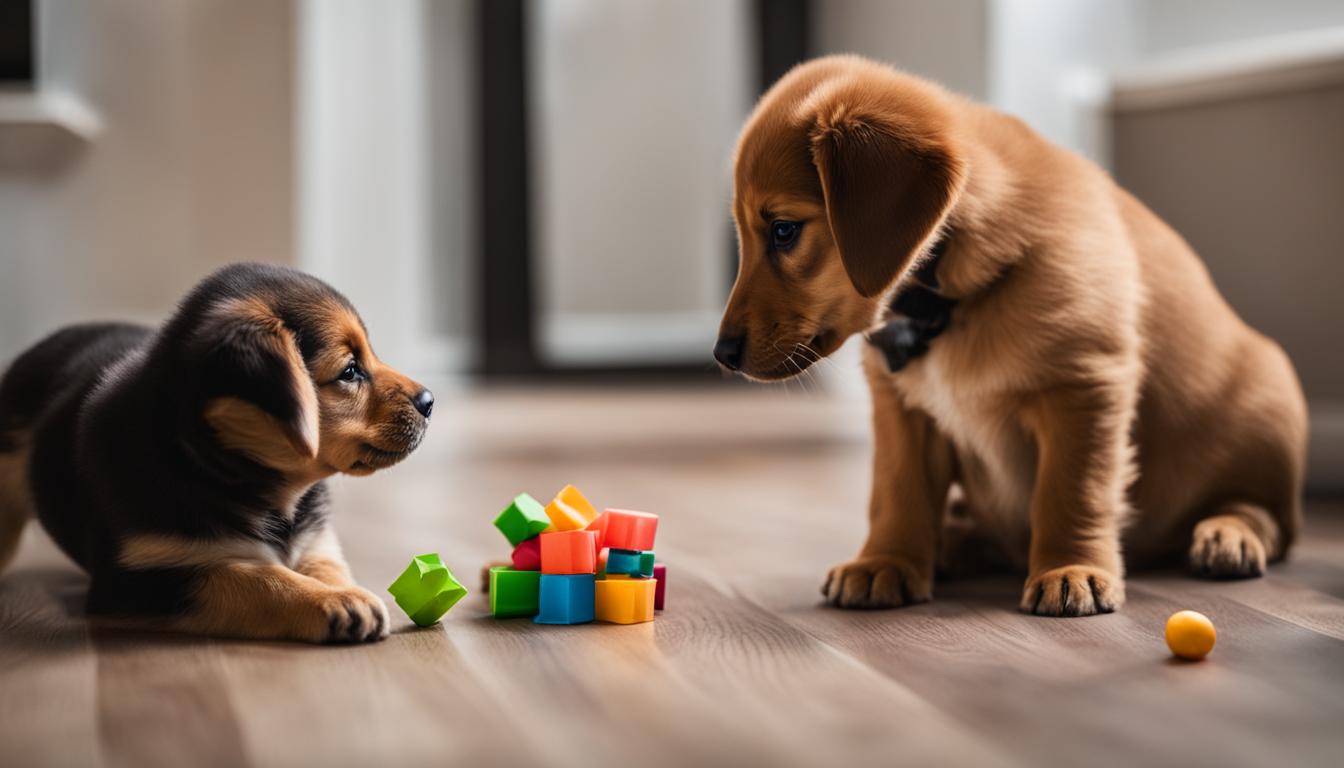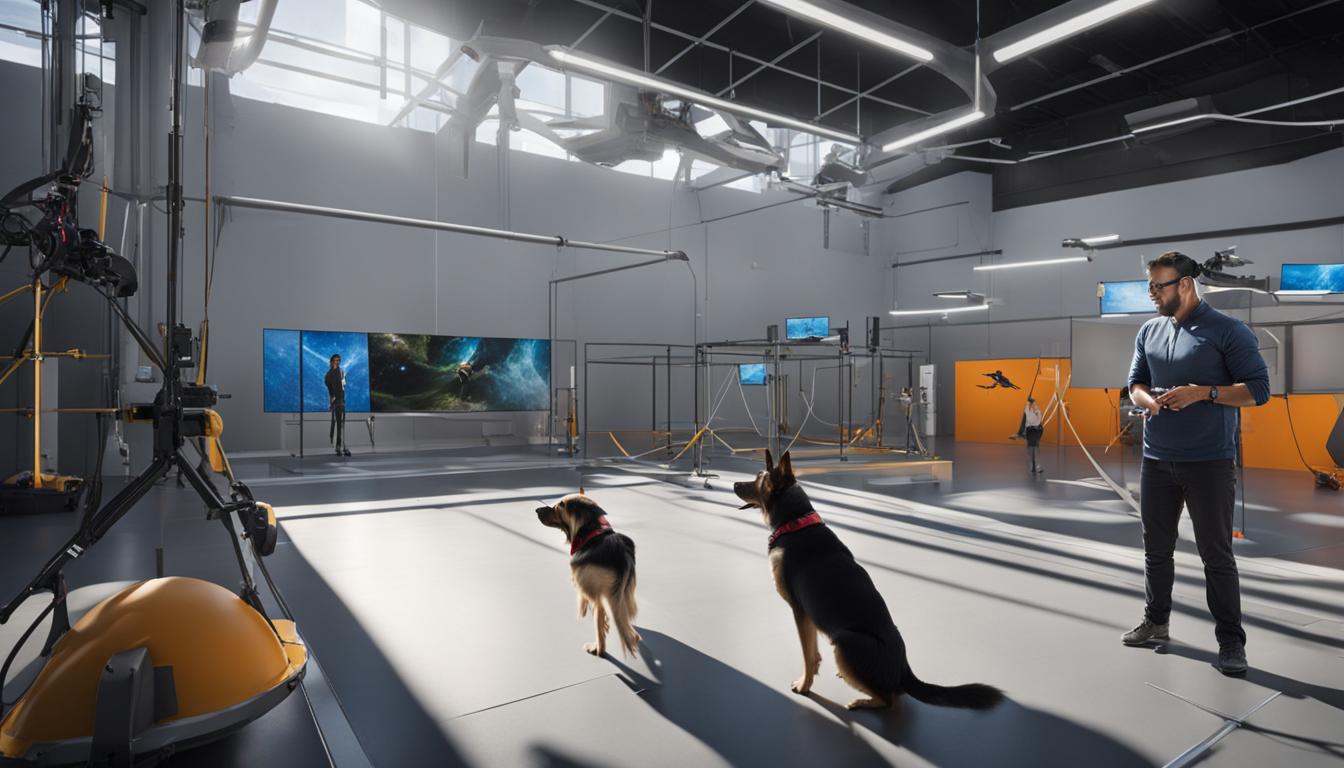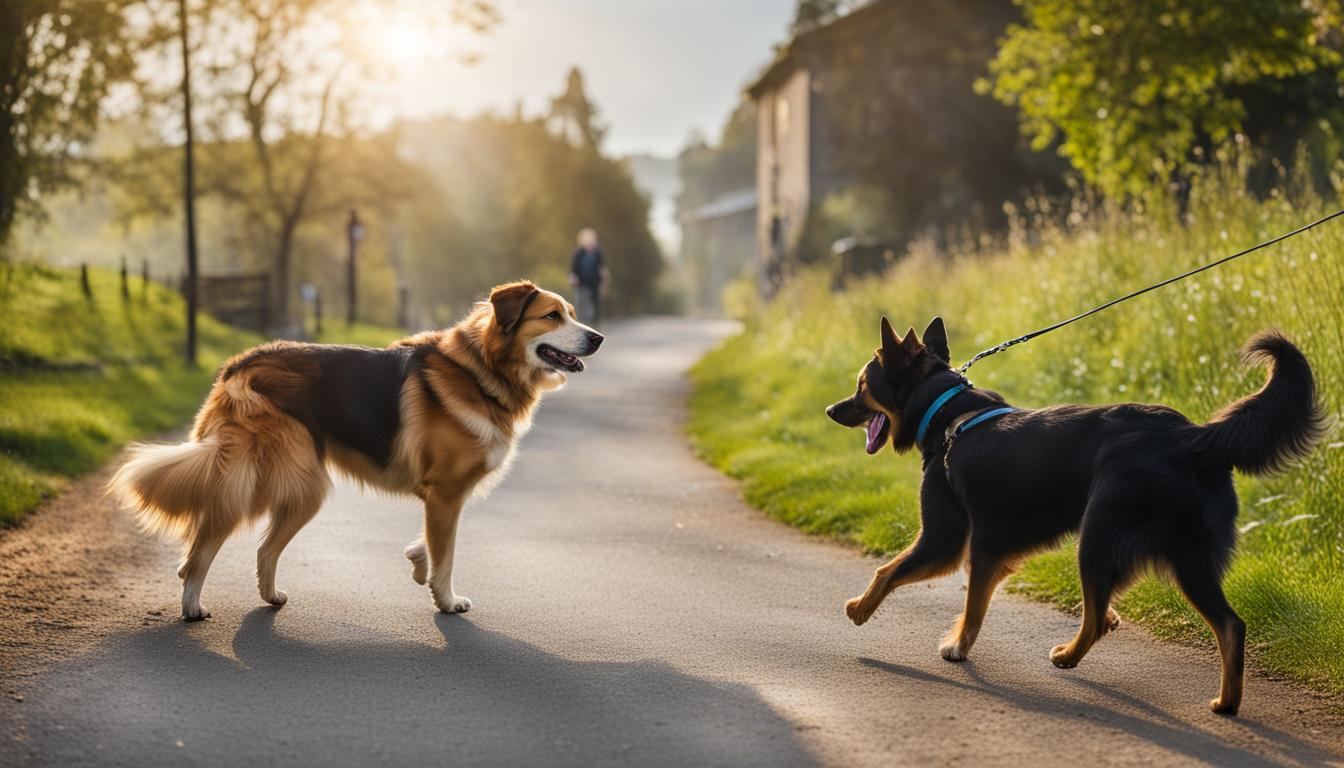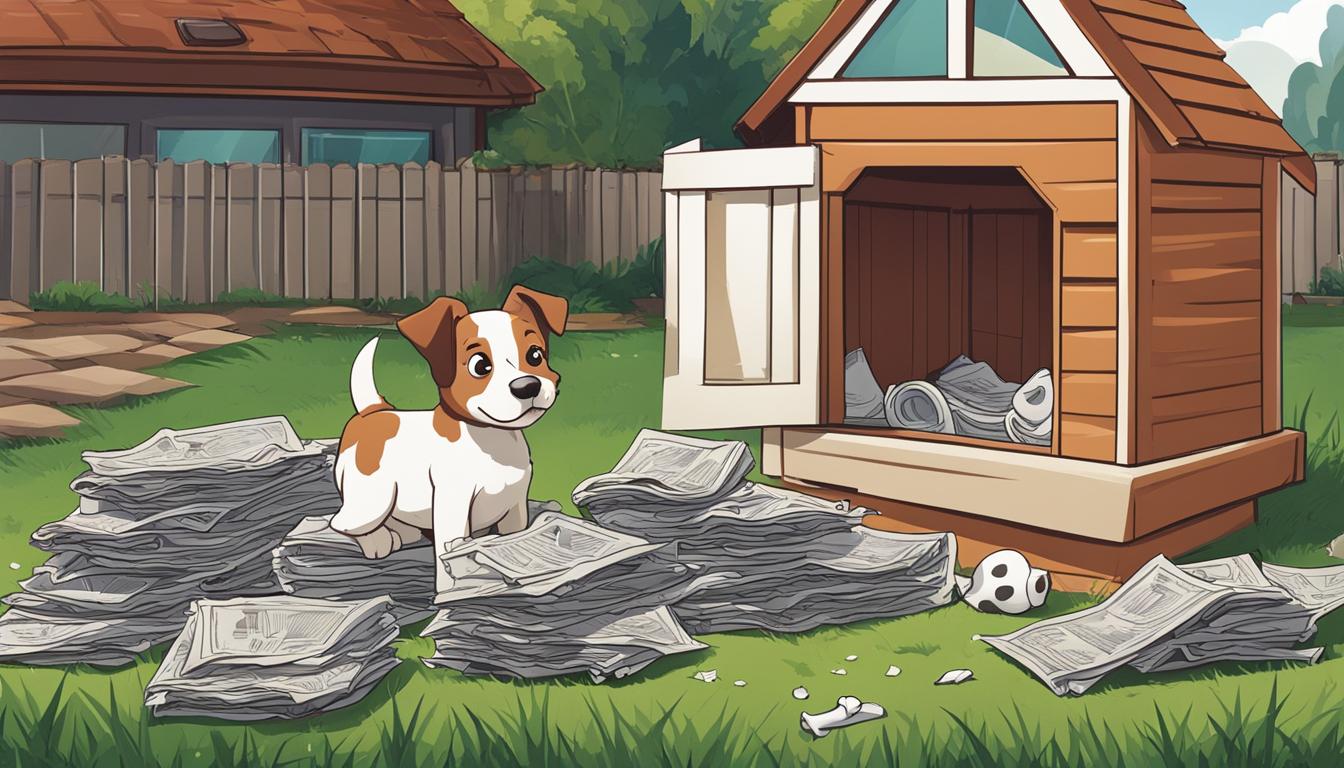Resource guarding in dogs, also known as possessive aggression, can be alarming and scary for dog owners. It can manifest as growling, lunging, or biting when a dog feels their resources are being threatened. This behavior can happen with food, toys, or even their space. Resource guarding can occur between dogs as well, especially with the introduction of a new puppy or rescue dog. Understanding what causes resource guarding and how to prevent and address it is crucial for fostering safer and happier interactions with our pets.
Key Takeaways:
- Resource guarding refers to possessive aggression in dogs, where they display protective behaviors over their resources.
- Signs of resource guarding include growling, lunging, or biting when someone approaches their food or toys.
- Preventing resource guarding in puppies involves socialization, positive reinforcement training, and gradual exposure to various stimuli.
- Training dogs to share toys requires desensitization, counterconditioning, and building trust.
- Consulting with a professional trainer or behaviorist is recommended for addressing resource guarding in multi-pet homes or with rescue dogs.
What is Resource Guarding and Food Aggression?
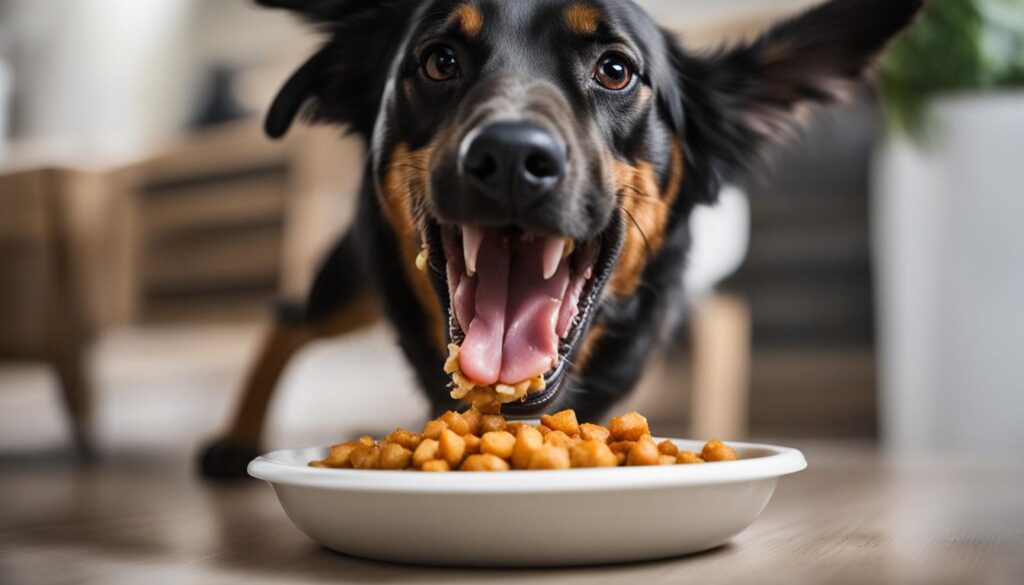
Resource guarding in dogs is a behavior where they protect their possessions, such as food, toys, or even their space, from others. While resource guarding is a natural instinct in dogs, it becomes a problem when it escalates to aggressive behaviors. It can be alarming and challenging for dog owners to witness their dogs growling, lunging, or biting when they feel their resources are being threatened.
Signs of resource guarding in dogs can include subtle cues like freezing or bracing, as well as more intense displays like growling and biting. It’s important to understand the signs and causes of resource guarding to effectively address this behavior. By doing so, we can create a safer and more harmonious environment for our pets.
“Resource guarding refers to any behavior that discourages others from taking or approaching an object or valued area in the dog’s possession.”
Managing food aggression in dogs requires techniques for reducing possessiveness and building trust. Positive training methods such as desensitization and counterconditioning can be effective in addressing resource guarding. Desensitization involves gradually exposing the dog to situations where their resources are being approached, making it a positive experience. Counterconditioning focuses on changing the dog’s emotional response by associating the approach of others with positive outcomes, such as receiving treats.
By understanding the nature of resource guarding and implementing appropriate training techniques, we can help our dogs feel more secure and less likely to guard their resources. This not only promotes a safer environment but also strengthens the bond between dogs and their owners.
So, if you notice signs of resource guarding in your dog, such as growling, freezing, or snapping, it’s important to act promptly. Seek guidance from a professional trainer or behaviorist who can provide tailored strategies to address your dog’s specific needs.
| Techniques for Reducing Possessiveness | Managing Food Aggression in Dogs | Signs of Resource Guarding in Dogs |
|---|---|---|
| Desensitization | Gradually exposing the dog to situations where their resources are being approached | Subtle cues like freezing or bracing |
| Counterconditioning | Changing the dog’s emotional response by associating the approach of others with positive outcomes | Intense displays like growling and biting |
| Building Trust | Creating a positive association with the presence of people or other pets around their resources | – |
Training Dogs to Share Toys and Preventing Resource Guarding
Training is a crucial component when addressing resource guarding behavior in dogs. By implementing effective training techniques, you can create a positive association between the presence of people or other pets and your dog’s resources. One of the most successful methods is desensitization, which involves gradually exposing your dog to others being near their toys or food.
When it comes to toy aggression specifically, it’s important to provide appropriate solutions that promote sharing and discourage possessiveness. One effective approach is to use a “trade-up” technique. Encourage your dog to drop or release a toy by offering them a higher-value item in return. This helps them associate giving up a toy with receiving something better, reducing their inclination to guard it.
Remember, the key to training dogs against guarding behavior is to build trust. Through positive reinforcement and consistent training, you can teach your dog that sharing their toys and resources brings rewards and benefits.
Building trust with dogs that exhibit guarding behavior is essential in preventing resource guarding. This can be achieved by creating a secure and nurturing environment for your dog. Ensure they feel safe and comfortable by providing them with their own designated space and avoiding situations that may trigger their guarding instincts.
Table: Training Dogs to Share Toys
| Step | Technique |
|---|---|
| 1 | Desensitization: Gradually expose your dog to others being near their toys |
| 2 | Trade-up Technique: Offer a higher-value item in exchange for the toy |
| 3 | Positive Reinforcement: Reward your dog for sharing their toys |
By following these training methods and building trust with your dog, you can effectively prevent and address resource guarding behavior. Remember, patience, consistency, and positive reinforcement are key in creating a harmonious bond with your canine companion.

Table: Tips for Managing Resource Guarding in Multi-Pet Homes and with Rescue Dogs
| Tips | Description |
|---|---|
| Establish separate feeding areas | Create designated spaces for each pet to eat, reducing competition and potential guarding behaviors. |
| Create a peaceful “food zone” | Provide each pet with a comfortable and quiet space to enjoy their meals, minimizing distractions and stress. |
| Consider the rescue dog’s history | Take into account the dog’s previous experiences and be patient and understanding of their potential guarding behaviors. |
| Practice desensitization and counterconditioning | Gradually expose the dog to situations that trigger resource guarding and associate positive experiences and rewards with the presence of others around their resources. |
| Seek professional guidance | If necessary, consult with a professional trainer or animal behaviorist for personalized strategies and support in addressing resource guarding in multi-pet homes or with rescue dogs. |
Conclusion
Dealing with resource guarding in dogs can be a challenging task, but fear not! There are effective solutions that can help you build a stronger bond with your furry friend. By implementing trust-building techniques and utilizing force-free training methods, you can prevent and address resource guarding in a positive and effective way.
Understanding the root causes of resource guarding is crucial. Dogs may guard their resources, such as food and toys, due to fear, insecurity, or past experiences. By identifying these triggers, you can tailor your approach and provide a safe environment for your dog to feel more comfortable.
Prevention is key when it comes to resource guarding. Whether you’re dealing with a new puppy or a rescue dog, it’s important to establish good habits from the start. By creating positive associations with sharing toys and food, you can help your dog understand that having others around their resources is a good thing.
Remember, building trust takes time and patience. It’s essential to approach training with a calm and positive demeanor. Seek guidance from professional trainers or behaviorists who can provide expert advice tailored to your dog’s specific needs.
FAQ
What is resource guarding in dogs?
Resource guarding in dogs refers to the behavior of protecting and defending valued resources, such as food, toys, or space, from perceived threats or attempts of others to take them.
What are the signs of resource guarding in dogs?
Signs of resource guarding can include growling, lunging, freezing, bracing, or even biting when a dog feels their resources are being threatened.
How can I prevent resource guarding in puppies?
It is important to start early socialization and positive training with puppies, gradually exposing them to people and other pets around their resources. This helps them learn that sharing is a positive experience.
How can I train my dog to share toys?
Training techniques such as desensitization and counterconditioning can be effective in teaching dogs to associate the presence of others with positive experiences, like receiving treats, when they are near their toys.
Can resource guarding occur between dogs?
Yes, resource guarding can occur between dogs, especially when introducing a new puppy or rescue dog. It is important to manage their interactions and provide separate feeding areas and designated spaces for each dog’s belongings.
What can I do to manage resource guarding in multi-pet homes?
Creating separate feeding areas and establishing a peaceful “food zone” can help manage resource guarding between pets. It is also important to ensure each pet has their own toys and personal space.
How can I address resource guarding in rescue dogs?
Rescue dogs may have unique experiences and sensitivities that contribute to resource guarding. Consulting with a professional trainer or behaviorist can help create a plan tailored to the dog’s needs, building trust and addressing their guarding behaviors.

